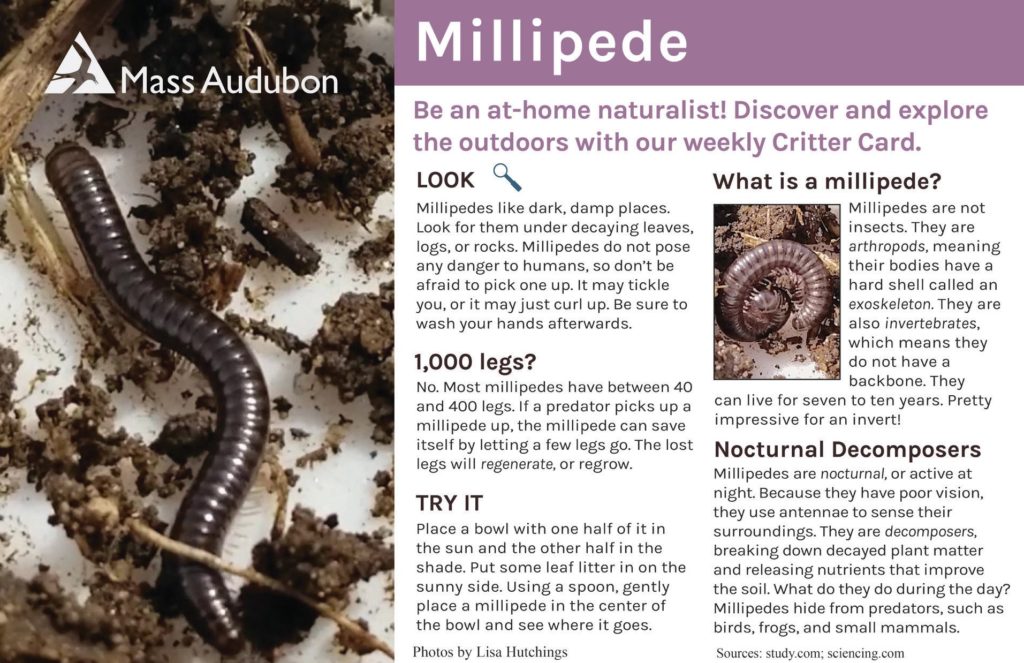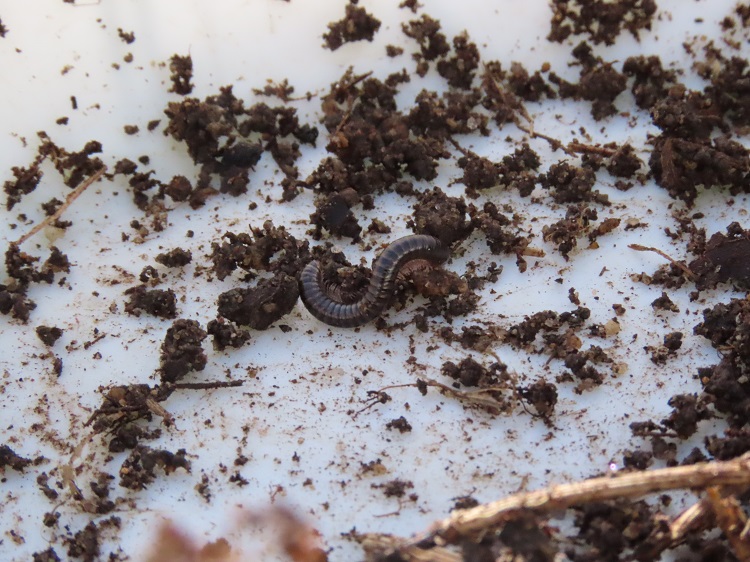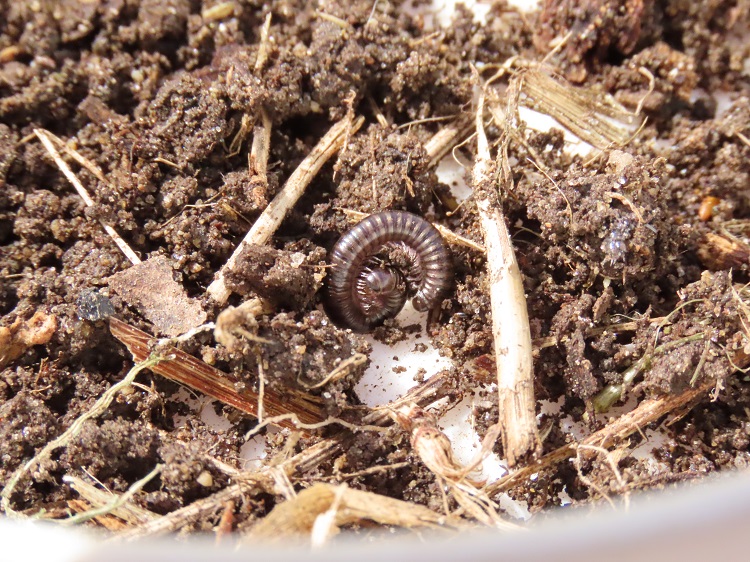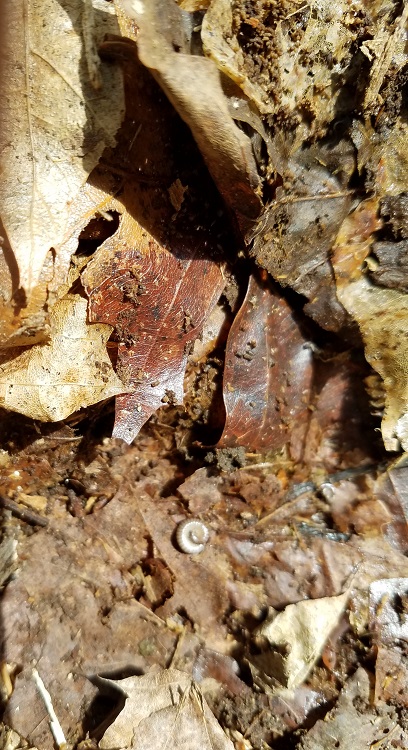There are roughly 1,400 species of millipedes in the US and Canada, and about 7,000 worldwide. Depending on the species, millipedes can live seven to ten years and grow to between 0.1 and 12 inches. Millipedes may look like bugs, but are actually arthropods, more closely related to crayfish, lobster, and shrimp than they are to any insect. Their hard, outer shell, or exoskeleton, is smooth to the touch, segmented, and supports them since they have no backbone. Millipedes breathe through spiracles, or holes along the sides of their body.

Some sources say that millipedes are decomposers, but the correct term is detritivores, meaning they live on a diet of decomposing vegetation, and as they process their food, they pass the nutrients back into the soil.

The body of a millipede is made up of segments, with each segment having two pairs of legs. Millipedes can have dozens of body segments when they are full grown, but they have only six segments when they hatch from their eggs. Some species hatch as a larvae and will have no legs until after their first molt.
With each molt they go through, millipedes shed their exoskeleton and emerge with more body segments, legs included. This process is known as anamorphic development. Before they molt, millipedes will hide in a safe place, as the process can take up to a few weeks. After they’ve molted, they will be unable to use their legs until their new exoskeleton has hardened. During this time they will eat their old exoskeleton, which helps provide them with nutrients while they are unable to travel far.

When millipedes reach sexual maturity, somewhere between two and five years of age, they will come together to mate. The female will take up residence in a protected location where she will lay her eggs. Depending on the species, a female may lay a single egg, 100 eggs, or give birth to live young. Most millipedes lay somewhere between 20 and 30 eggs and will typically stay with them to incubate. Massachusetts’ most common millipede, the American Millipede, will lay one single egg in a nest of regurgitated food. The female will coil herself around her egg and incubate it until it hatches a few weeks later. Once the egg hatches her job is done, and she and her offspring part ways.

When threatened, millipedes coil their bodies into a spiral. Tergites, the hard plates on the back of millipedes, act as armor to protect their soft underside. Some species will step it up a notch by releasing chemicals from their skin. Ozopores, or stink glands, may emit a repelling smell and taste to discourage predators. Other species have a secretion that causes skin irritation or blisters when handled.
Be careful, respectful, and curious when you observe these little critters.
Did you know? There is scientific suggestion that millipedes may have been the first animals to live on land. This theory is fueled by the discovery of Pneumodesmus newmani, a fossil found in Ireland from 428 million years ago. It is the oldest fossil that shows spiracles for breathing air.
Looking for more Resources and Activities?
Read this lesson for kids about millipedes then quiz yourself with this online quiz.
Read about and design an experiment for home or online classrooms.
Watch this video to learn about millipedes. Great for middle school – adults.
Watch this short video about observing millipedes in the classroom.
Watch this short video about millipedes, great for PreK – Elementary.
Read a poem by Mass Audubon’s teacher, Susan Edwards.
For fun watch this video of a millipede marching to a song.
Submissions

Millipede in leaf litter – Lee Grover 
Looking for millipedes – Lee Grover

What’s Next?
What would you like to learn about from your backyard?
Stay tuned for the next Critter Card coming out on Monday, by email and Facebook.
Connect With Us
Would you like to be added to Lisa Hutchings’ VIP email list? Receive special resources such as nature slideshows and educational tools for at-home learning. Send an email to [email protected] requesting to be added to the VIP list.
Thanks to our Critter Card Fans
You emphasis on the plants and animals people can find in their backyard is perfect for right now. I love how you make the commonplace interesting and adventuresome. – artist-educator
Just a quick note to say how grateful we are for these weekly cards and all the info that you send along. – parent

